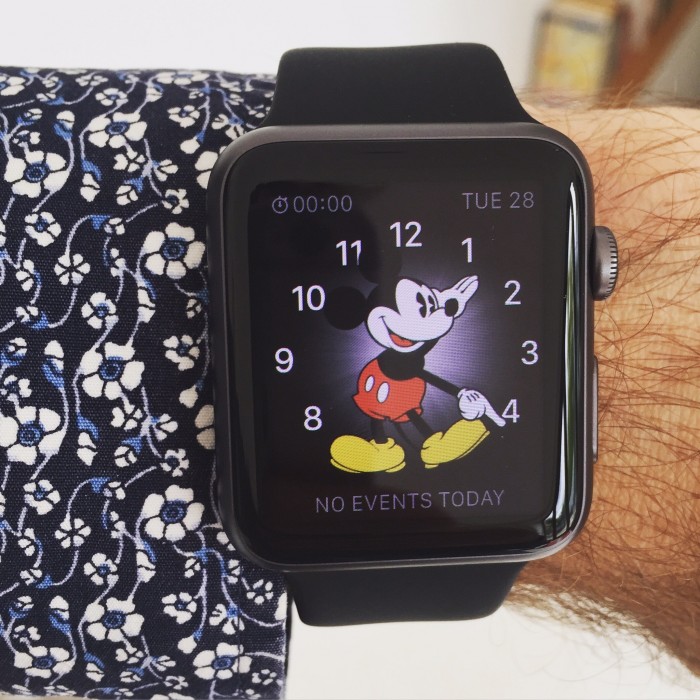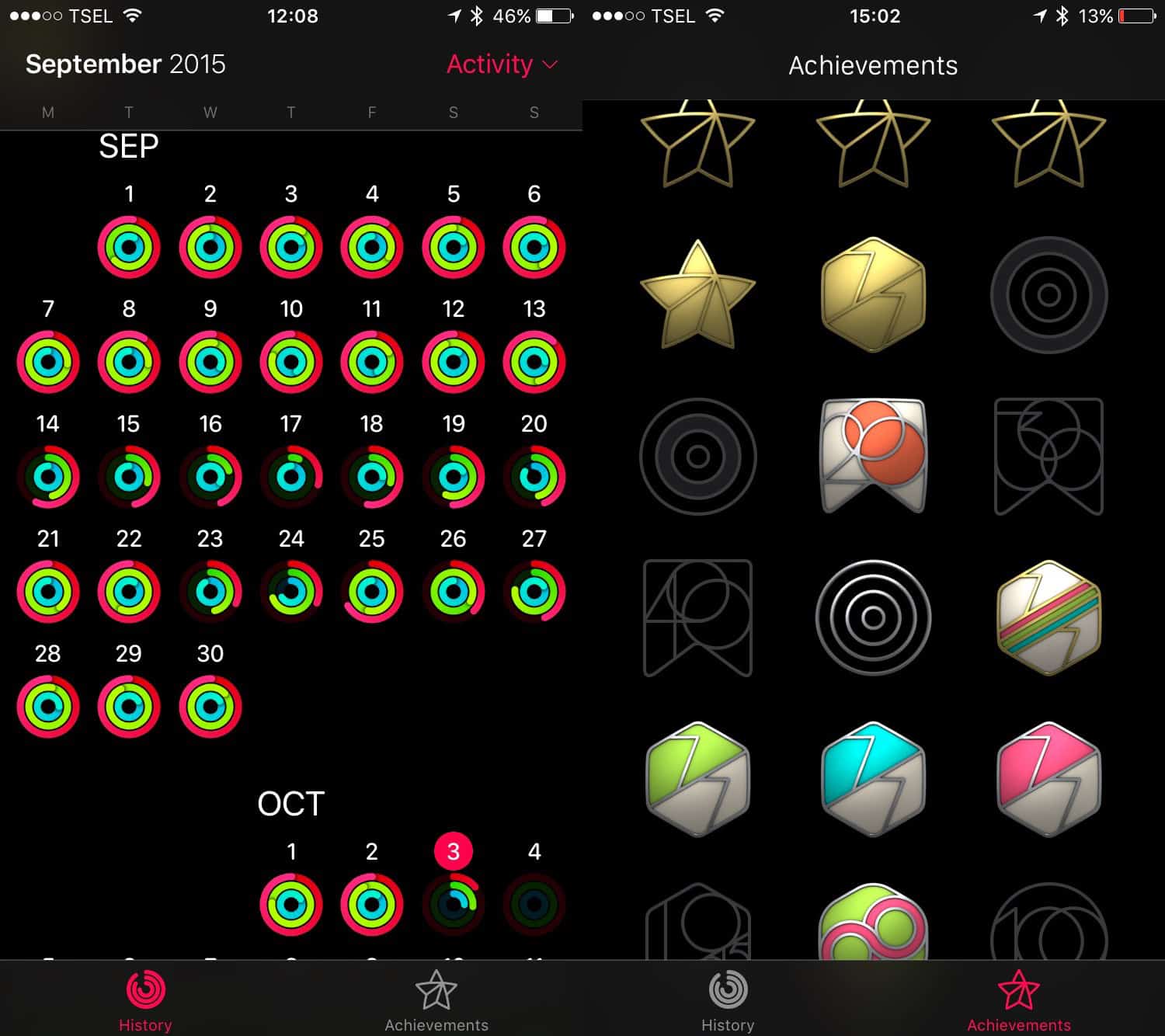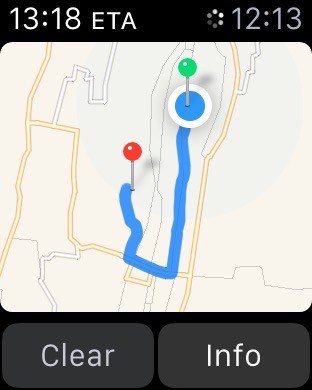This page contains affiliate links. Please read our disclosure for more info.
Over the summer, on a trip to London I went into an Apple Store to exchange some broken headphones and walked out with a new 42mm Apple Watch.
The last time I regularly wore a watch was when I was a teenager but the ubiquity of smartphones has shown that we as a species are always willing to endure a little discomfort in exchange for convenience or empowerment—carrying around an expensive, often bulky, and pretty fragile device has become second nature to basically all of us (except, it seems, that one lady)—but it has had to earn its place in our pockets and purses.
The Watch had two weeks—the length of Apple’s no-questions-asked return policy—to make me wear a watch full time again.
Life with the Watch
One of the first things that I started telling people after a few days was that the Watch was nothing more than a remote control for my phone. Which is true but also doesn’t capture how much of a difference this actually makes.

The promise of technology is that it can make us individually and collectively better. The phone brought with it an immeasurable amount of convenience and utility, but it also brought with it the weight of unintended consequences, specifically the psychological implications of being continuously attached to a digital world which often leads me to become distracted and detached from the physical one.
I hope that I’m not the only one who, in quieter moments, has felt that gnawing, exhausted emptiness that comes after looking up from an extended social media session only to find that three hours have passed in which nothing much was really achieved. Personal goals were no nearer nor was knowledge or understanding increased.
The small screen of the Watch discourages long interactions—Twitter and Instagram have Watch apps, but I rarely use them and certainly not for more than a minute or two. It helps keep my phone in my pocket, and as a result I am much less likely to indulge in that almost automatic response that happens when I pull out the phone: do whatever small task I got it out for, then fire up Twitter or Facebook or Instagram and start seeing what’s new.
If I want to check in somewhere, or pull up a map, or send a quick message, or do dozens of those other little tasks that our portable supercomputers are so great at, I can do it quickly and easily from my wrist and then I’m done, not least because holding up a wrist for an extended period quickly becomes uncomfortable.
It’s hard to overstate the importance of this without entirely overstating it—I am perpetually at risk of drowning out my inner creative voice by all of the unnecessary time I spend online, lurking through the cultivated exteriors of strangers and almost-strangers, a behaviour which, especially in my darker moments, does little but increase feelings of anxiety and failure and irrelevance.
This is, of course, a personal failing; a misuse of the tools. They can and are also used to great effect—Never Ending Voyage’s continued existence depends on them, even—and your mileage probably varies significantly. Perhaps you are a lot more self-assured, or have a level of discipline that I lack, but if you don’t—if you’re not scoffing at the previous paragraph—consider the Watch a gatekeeper, another node between you and the rabbit hole of the larger screen; a way of selectively managing your inputs where only the absolute most important things get through and where prolonged engagement is actively discouraged.
It’s not perfect: the phone still comes out, but it helps, especially during the honeymoon period when I was looking for more and more things for the device to do. The reduction of compulsive feed checks makes me feel like there is more intentionality to my social media interactions when I do use these services now, which makes a positive difference to my emotional response to them.
The second thing I tell people is how it’s changed my relationship with exercise.

The Activity Tracker tracks activity and is based on three metrics: a calorie (or move) goal that you set yourself, 30 minutes of exercise, and a standing-and-moving-around-once-an-hour-for-at-least-12-hours goal. The watch will tap you during the day, giving you feedback on your progress and encouraging you to reach these goals.
It also has achievements, which, as of this writing, I have unlocked 12 of. As a self-diagnosed Completionist, I am determined to get them all.
I have been meaning to take exercise more seriously for years and I am about half way through the Zombie 5K running app which is an 8 week course that I’ve been working on for a year now.
Since owning the Watch, I am now doing regular daily exercise and all it took was three coloured rings and a few little spinning trophies. Not breaking the streak of completed circles is a surprisingly compelling way of getting me up from the couch and outside for a walk or run, especially at 10pm when I still have over 300 calories to burn in the final two hours of the day.
The Watch has done more to help me create and maintain a regular exercise regime than anything else I’ve tried. It’s difficult to put a price on that kind of personal improvement, but £340 for actual, verifiable results seems like a bargain.
Travelling With the Watch

So far I’ve only been to London, Amsterdam, and Bali—all places I feel entirely comfortable wearing it. In a lot of ways, it is more discreet than a smartphone—the hardware is understated and elegant and the screen is a lot smaller, and it remains off unless you’re looking at it or interacting with it—but in hot countries, it is out on display all the time and it could very well make me a target.
The maps app is great, allowing you to search for locations and giving you turn-by-turn directions as you travel. Subtle taps on your wrist indicate a change in direction, and quick glances are more discreet and convenient than pulling out the phone at every corner.
Siri is much more reliable and entirely hands-free—raise your wrist and say “Hey, Siri” to get started—and, although it still struggles with proper nouns, it’s a great way to send quick messages or start timers while cooking and so on.
In theory, you should be able to get airline boarding passes on your Watch but I wasn’t able to get this to work through Singapore Airlines as it wouldn’t allow me to load our passes into Passbook (now known as Wallet in iOS 9).

We’ve also used Clear for managing our shopping lists on the Watch—again, another slight convenience.
Oh, and it tells the time in a variety of pretty ways.
And…that’s about it for travel. Honestly, most of the apps aren’t great and they tend to get launched once and are never launched again (hopefully WatchOS 2 will see some improvements—I’ll update this if it changes). There is nothing that it can do that will improve your travel experience that the phone doesn’t already do and sometimes it feels more like a luxury convenience that makes life easier by a tiny fraction of a percent than any sort of must have, life-changing device, especially at first.
Except that wherever I go, there I am—with all of my issues and imperfections and good intentions—and at some point there has to be reckoning between who I claim I want to be and the behaviours I actually exhibit every day and any Thing that helps me close that gap by whatever crazy new behaviours it encourages and whatever silly mental hacks it has to employ (little 3D spinning trophies included) has a value way beyond that of its price tag.
So, although the Apple Watch has not been all that useful to Travelling Simon, it’s done wonders for Self-Actualising Simon, and if any of what I’ve said here has resonated with you—any vague yet mostly not acted upon desire to increase the amount of exercise you do or reduce the amount of time spent on your phone—then I can wholeheartedly recommend taking a plunge into unselfconscious, circle-completing, wrist-talking madness.
I bought the 42mm Apple Watch in Space Grey with the black Sport band, which costs £339/$399. This model is also available in the smaller 38mm size for £299/$349. An accompanying iPhone 5 or later is required.

It’s been about a year since you wrote this and I’m wondering about your current thoughts on the Apple Watch and if it still serves you.
Simon still loves the Watch. It has made a big difference to his health as he is now exercising every day.
I have a great stock of watches & i love to keep them with myself while travelling. Among sport watches, I prefer Garmin as it is a great activity tracker
For me the apple watch is not a big deal is more the brand that they send you and i thing the smat phone do more things
I’ve been saying that I thought smart watches were dumb from the beginning, but I have to admit you make them look pretty nifty here.
Anything that encourages Simon to exercise is good in my opinion!
Do you find it inconvenient to have to charge the watch every night?
Simon is used to having to charge his phone every night so it’s not a big deal.
Argh! Had decided a few months ago to sell everything tech bar my MacBook Pro retina and iPhone. Started coming to terms with not having an Apple Watch and selling mine, as I couldn’t see me travelling with it, and then I come across this article! Damn you! ;)
Interesting take. Of the various uses you mention, I think the one related to exercise would be my main use for an Apple Watch. I can see myself using it as a ‘gatekeeper’ sometime in the future, but I don’t think I need it just yet.
As for the watch itself, I have not even dared to go see it in a shop. I fear that my attraction for all sorts of new gadgets might make me buy it, which something tells me I’d regret later. From what I’ve read here and elsewhere, my impression is that smart watches are full of promise, but the technology and the apps are not quite there yet, except for a bunch of rather limited uses.
I’m keeping my eye on the Apple Watch 2, whenever it is it comes out…
If you are interested in the exercise tracking, it’s worth considering this version of the Apple Watch. It has made such a huge difference to Simon’s health—in 16 years of being together it’s the only time he has consistently exercised. The motivation the watch gives really works and is worth the money in my opinion (and I was initially against the purchase!).